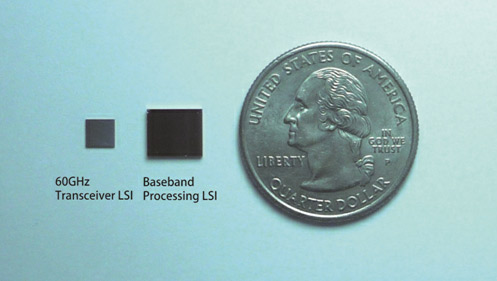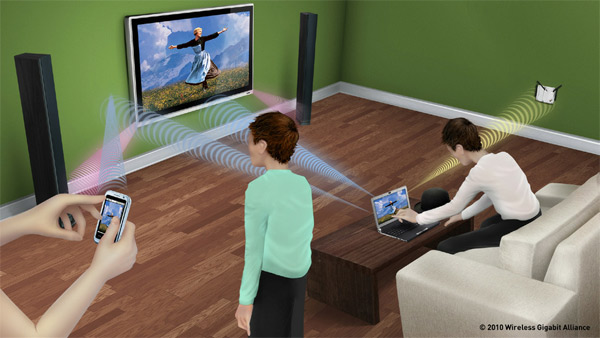WiGig broke through the 1-watt barrier, will soon appear on smartphones

Panasonic has announced the development of the WiGig chipset, which will consume less than 1 watt. Such microcircuits can even be inserted into telephones.
WiGig transmits data in the unlicensed frequency range of about 60 GHz (from 57 GHz to 66 GHz - a band of nine gigahertz), at a millimeter wavelength. In accordance with the specifications of WiGig 1.0 , the file transfer speed at a distance of several meters is up to 7 gigabits per second.

The new Panasonic chipset includes a 60-gigahertz transmitter and a signal processing module with support for MAC packets.
Less than a watt power consumption makes it possible to integrate the chipset into mobile devices. For comparison, the iPhone 4 display at maximum brightness consumes 0.42 watts, the display of the new iPad is 7 watts, while the tablet is equipped with a 42.5 watt-hour battery, so gigabit internet will not reduce the battery life too much. But what a perspective it opens up! For example, you can copy a full-length movie in HD resolution in 30-40 seconds wirelessly.
